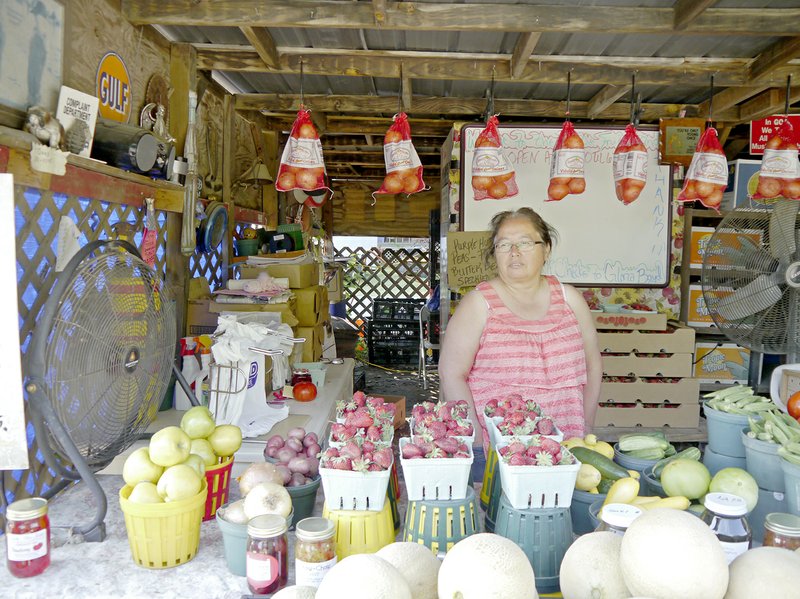For White County, strawberries represent far more than a sweet, juicy treat signaling the beginning of another Arkansas summer. Although “berry pickin’” for most folks these days means choosing a quart of strawberries to take home for dinner, strawberries were once the source of an economic boom in towns such as Judsonia, McRae and Bald Knob.
Strawberries made their appearance in White County when newcomers from the North brought the succulent fruit south with them in the late 1800s. Daniel W. Wheaton is credited with growing the first strawberry crop in White County in 1874, according to records from the Encyclopedia of Arkansas History’s website. After his venture proved successful, strawberry farming quickly became the leading cash crop of the area. The sandy soil that is ideal for growing strawberries, coupled with the proximity of the railroad system to transport the berries, contributed greatly to the growth of the strawberry-farming industry in White County.
On the outskirts of Judsonia, near the banks of the Little Red River, stand the remnants of what was once the Judsonia Box Co. The factory was built by Jim and Frank Cathcart after their move south from Indiana in 1885, according to historical records. “The box factory,” as longtime residents refer to it, produced wooden quart-size containers, as well as crates, for storing and shipping strawberries.
Records state that by 1944, the box factory was cranking out 850,000 containers per year and employing 60 to 120 workers during peak strawberry season. The location for the box company at the base of the railroad bridge turned out to be perfect for the thriving strawberry business.
The community of McRae enjoyed its greatest period of prosperity during the
strawberry boom, thanks in part to the timber industry’s clearing of land that was used for strawberry farming. The crop was shipped by rail from the nearby community of Garner.
According to stories of the time, Judsonia and McRae had long grappled for the title “Strawberry Capital of the World.” As it turned out, the moniker stuck in Bald Knob, where the city’s Strawberry Co. built the largest berry shed in the world, according to The Encyclopedia of Arkansas History. The structure was three-quarters of a mile long and sat parallel to the tracks of the Missouri Pacific Railroad line. In the peak year of 1951 alone, Bald Knob growers reportedly sold $3.5 million worth of strawberries.
The entire community was involved in the business of berries. As is recalled on the White County Historical Society website, school would end its spring semester the first week in May so children could take part in strawberry picking. The wage at the time was chronicled to be a whopping 5 cents per quart, which pales in comparison to consumer prices that sometimes top $5 for a quart of locally grown strawberries.
The historical society’s website also includes Raymond W. Toler’s recollection of the unusual inspection practice used by his employer, “Mr. Ted,” at the strawberry sheds near the railroad depot in Searcy in 1938 to ensure the quality of strawberries upon their arrival for purchase:
“Mr. Ted would negotiate with the growers and pay them if their berries were up to his rigid standards. To inspect the berries, he would have me or one of the other workers take a crate, or case, chosen by him and set it down on the platform. He then directed that the case be opened and one quart box of his choosing be removed. Oftentimes, he chose a box on the bottom tier. Then the box was handed to Mr. Ted, who took it in both hands and spread the berries on his ample stomach, which was covered with a freshly laundered shirt. In this process, all berries from the box could be examined closely. I suspect that the white shirt test was to check for overripe fruit that would not survive rail shipment,” the website states.
Even though the strawberry industry met its decline in the 1960s, the city of Bald Knob still pays homage to its past with a festival that celebrates all things strawberry each year. Around early May, residents throughout the county begin to keep a lookout for quarts of locally grown strawberries at roadside stands.
At “The Little Fruit Stand” on Arkansas 367, between the former strawberry meccas of Judsonia and Bald Knob, the fragrance of freshly picked strawberries greets visitors as they approach the tables laden with produce. The berries are bought from Francisco Munoz, who uses 2 of the 36 acres on his farm near Griffithville for growing strawberries.
Also along Arkansas 367, the old Bald Knob strawberry shed is still visible to passersby. Both the shed and the remains of the Judsonia Box Co. serve as reminders of the prominence that strawberries once held in White County.
